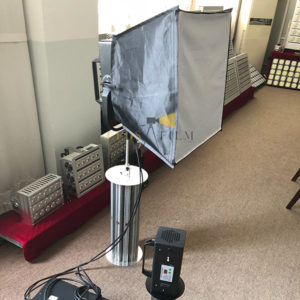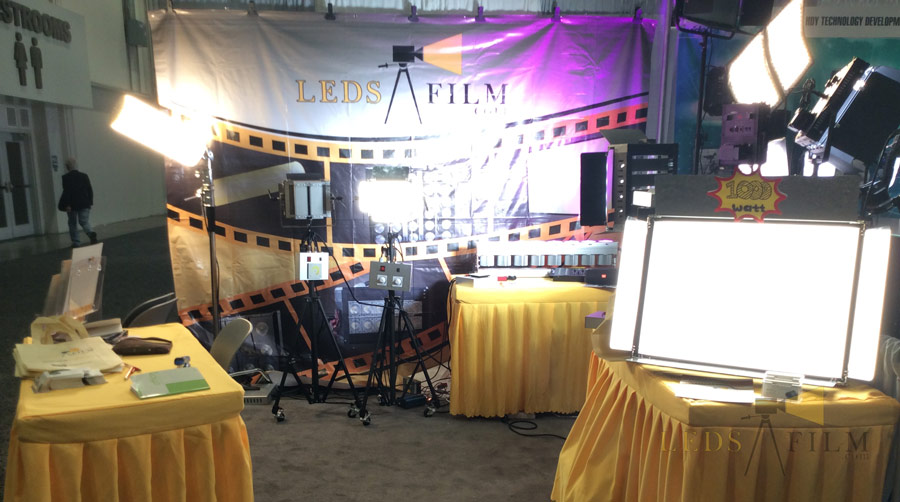Table of Contents
Reciprocity law and its failure
In photographic exposure, we often encounter the problem of the reciprocal law and the failure of the reciprocal law, and we must understand and master it from both the theoretical and practical aspects.
Reciprocity law
The definition of exposure tells us that all films with equal exposure will have the same negative image density after development. In the exposure formula, the illuminance and time can be replaced with each other. For example, if the illuminance is 100 lux, the daily exposure is 1/100 second, and the illuminance is 1 lux, the exposure is 1 second, and the amount of exposure between them is equivalent. This kind of relationship between illuminance and time value can replace each other, it is called reciprocity law in photographic exposure, also called reciprocity law or reciprocity law.
In photography practice, the sensitivity of the emulsion layer of the photosensitive film to light is generally limited to a certain range to produce a normal exposure effect. If it exceeds the limited range, it is impossible for the photosensitive emulsion layer to strictly abide by the exposure law without compromise. When the illuminance of the emulsion layer of the photosensitive sheet is too large or too small, or the exposure time is too fast or too slow, the same exposure value may not produce the same exposure effect.
For example, when the light is reduced to a very low level, even if the exposure time is relatively increased, a satisfactory exposure effect may not be obtained. On the contrary, when the light is very bright, the exposure time is shortened to a very high shutter speed. A very short moment may not be able to obtain a satisfactory exposure effect. On the contrary, when the light is very bright, the exposure time is shortened to a very short moment with a very high shutter speed, and a good exposure effect may not be obtained. . The above two phenomena are called light failure. For example, when shooting a starry sky with weak brightness in astrophotography, or shooting in a very short instant with an electronic flash, the phenomenon of light exposure can occur.
Different photosensitive materials have different degrees of light exhaustion, and color films are more prone to light exhaustion than black and white films. This phenomenon is caused by the inertness of the photosensitive film to the light. The light is extremely dark or the exposure time is extremely short, and the light cannot penetrate the inner layer of the photosensitive emulsion, so the photochemical effect of the film is reduced. Assuming that the same kind of film is used with an illuminance of 1000 lux and an exposure of 1 second, the density of silver shadow produced by an illuminance of 1 lux and an exposure of 1000 seconds is greater. This phenomenon is the failure of the reciprocal law.
Reciprocity law failure
The concept of reciprocal law failure in photographic exposure is: the same exposure is applied to the same photosensitive film to produce different densities.
The phenomenon of reciprocal law effect can often be encountered in the process of photography, in the shooting stage, in the zooming stage in the dark room, and in both black and white and color films. At dusk and dawn, and indoor light conditions are very dark, the exposure time is very long, and often underexposure, or color drift phenomenon occurs.
The invalidity of the reciprocal law should be mastered in photographic exposure. When using various films, you should fully understand its performance, especially pay attention to the exposure incremental data of reciprocal law characteristics provided by the film manufacturer. For example, Kodak 35mm film in the United States, shooting in dim light, when the exposure time measured by the light meter is 1 second, 10 seconds and 100 seconds, the actual exposure time should be 2 seconds, 50 seconds and 1200 seconds. Conversely, when shooting with a high-speed electronic flash, if the exposure time measured by the light meter is 1/10000 second, you need to increase the aperture by half the aperture than the normal exposure.
In order to meet the different needs of photography and to solve the problem of reciprocity law failure, some foreign photosensitive material manufacturers have specially produced films suitable for long exposure and short exposure. Long-exposure type films are marked with L and are suitable for exposures from 1/10 second to 120 seconds or longer, and short-exposure films are marked with S and are suitable for 1/10 seconds to 1/2000 seconds or less. exposure.
Exposure and film density
The purpose of photographic exposure is to obtain a film of normal density. Therefore, we should understand what density is, and also grasp the influence of density on image effects.
The concept of density
Density refers to the amount of silver particles deposited on the unit area of the film after the photosensitive material is exposed, developed, and fixed, and is used to indicate the degree of blackening. This blackness is usually called density.
During the process of exposure and development, the silver halide in the emulsion layer of the photosensitive film is reduced to unequal amounts of metallic silver according to the different brightness of the subject. Metallic silver is an opaque particulate matter that can absorb and block light. From the perspective of the brightness of the scene, when the subject is illuminated by bright light, the intensity of the reverse light is stronger. After the photographic exposure and development, the brighter the part, the denser the restored silver particles, the more silver particles are deposited, and the transparency The lower the value, the more light is blocked and the less transmitted light is observed. On the contrary, the darker the part, the more the reduced silver particles are scattered, the less the silver particles are deposited, and the higher the transparency. There is less light and more light passes through.
The difference in the amount of silver particles deposited on the negative constitutes an image with different blackness. Because the density has different degrees of shadowing ability, the size of the density can be measured according to the amount of light transmitted.
Density and image effects
From the perspective of the amount of sunlight in photography, the greater the exposure, the more the film is exposed to light, the more silver particles are deposited, the darker the image, the greater the density of the negative film; on the contrary, the smaller the exposure, the less the film’s sensitivity to light. , The less the deposited silver particles, the lighter the blackness of the image, and the lower the density of the negative film. It can be seen that the amount of exposure directly affects the density formed by the film. Neither overexposure nor underexposure can achieve the “ideal density”, and can only lose the gradation of bright or dark parts.
The perfect image effect depends on the density of the negative film produced by the correct exposure. Any overexposed or underexposed negative film is difficult to print out the ideal image effect. Overexposed negatives have deep blackness and high density in the bright parts of the scene. The printed photos and images can only show some shadow patterns and gradations in the shadow parts of the scene to a limited extent, while the shadow patterns in the bright parts are white. There is no layered texture. Underexposed negatives, the brightness of the scene is greatly lost. The negatives are generally low in blackness and low in density, showing a transparent or semi-transparent state. The printed photos and images can only slightly show certain shadow patterns in the bright parts of the scene. , The shadow pattern level of the shadow part disappears in a gray and black tone. It goes without saying that if you want to obtain a rich, normal, and crisp image effect, you can only rely on negatives with correct exposure and normal density.
Exposure and tolerance
When photographing exposure, to make the light and dark levels of the subject scene more accurately reflected in the density changes of the film, the first step is to control the exposure. In addition, there is another factor that affects the conversion of the scene level to the tonal level, namely tolerance.
The concept of tolerance
Tolerance refers to the ability of photosensitive materials to accurately record the brightness range of a scene in proportion. The difference of the surface of the subject from the darkest part to the darkest part can be expressed by the ratio of light to dark. Suppose: the brightest part of the scene is 50 times brighter than the darkest part, then the ratio between them is 1:50, which is the difference between light and dark of the scene. The ability of the photosensitive film to correctly express the difference between light and dark of the subject is the latitude of the photosensitive material, which is usually also called the exposure latitude.
The latitude of black and white film is about 1;128, the latitude of color negative film is about 1:32~64, the latitude of color reversal film is only about 1:16~32, and the latitude of photo paper is about 1:30 about.
In photographic exposure, the use of more latitude photosensitive film to shoot scenes with smaller brightness differences, even if the exposure is slightly more or less, has little effect on the density of the film. From a practical point of view, the greater the latitude of the photosensitive film, the better the exposure control.
The relationship between tolerance and exposure
The relationship between exposure and the latitude of photosensitive film generally has the following three situations:
Tolerance is equal to the brightness range of the scene
When the latitude of the photosensitive film is equal to the ratio of brightness of the scene, the brightness range that the photosensitive film can record is exactly the same as the distance from the brightest to the darkest of the scene, and there is no other choice in exposure. If the exposure is slightly different, the gradation of the bright part or the dark part will be damaged.
Tolerance is greater than the brightness range of the scene
When the latitude of the photosensitive film is greater than the brightness ratio of the scene, the range that the photosensitive film can record exceeds the distance from the brightest to the darkest of the scene, leaving a lot of choice in exposure, usually in the allowable Within the range, the lowest exposure is selected as the exposure standard, so that the obtained film density reaches the minimum exposure standard, and the best image effect can be obtained by printing photos or copying positive films. In the case that the film latitude is greater than the brightness range of the scene, even if the control of the photographic exposure is slightly different, it will not affect the reproduction of the scene’s light and dark levels. 
Tolerance is less than the brightness range of the scene
When the latitude of the photosensitive film is less than the brightness ratio of the scene, the brightness range that the photosensitive film can record is far less than the distance of the scene from the brightest to the darkest. It is difficult to control the exposure. If you want to record the ratio of light to dark of the scene completely Is impossible. Generally speaking, at this time, the focus of exposure should be selected according to the different conditions of the subject, and the brightness of the main part of the subject should be used as the benchmark for exposure, taking into account the levels of other parts. Obviously, the exposure in this case is bound to lose a considerable part of the level of the brightness range. The key is to properly determine the focus of the exposure. What is lost is only some levels of the secondary parts.
